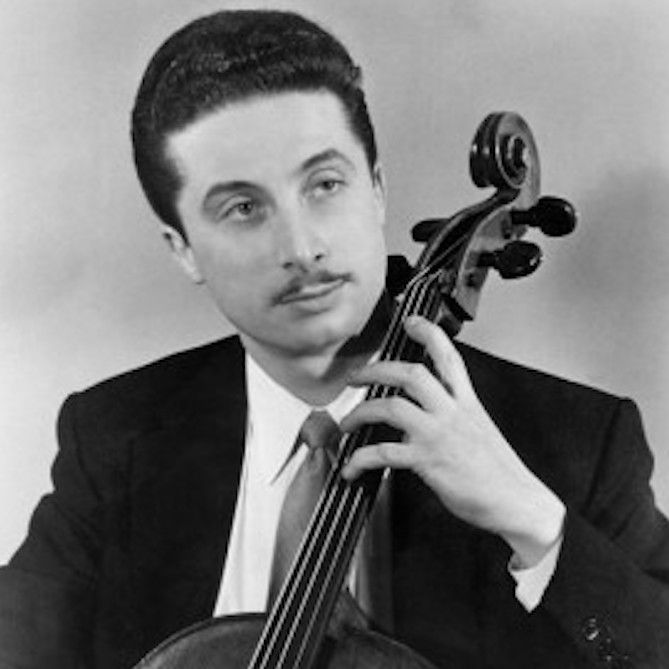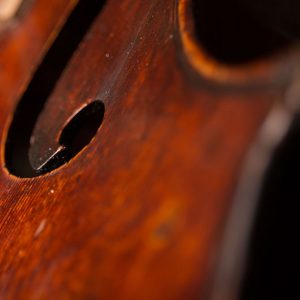
Laszlo Varga, Cellist for the New York Philharmonic, is Dead at 89
Blogmaster
Laszlo Varga, Cellist for the New York Philharmonic, is Dead at 89
by Bruce Weber and Jacob Burg
Reposted from the Herald-Tribune
Laszlo Varga, a Hungarian-born musician and teacher who escaped a Nazi work camp to become principal cellist for the New York Philharmonic under the batons of Dimitri Mitropoulos and Leonard Bernstein, died on Dec. 11 at his home in Sarasota, Fla. He was 89.
He died several days after a fall had precipitated a stroke, his son Michael said.
In a long career, Mr. Varga applied his virtuosic skills to solo performances, orchestral playing and ensemble work. As a young man he lost his position as first-chair cellist of the Budapest Symphony in a purge of Jews. He came to the United States after World War II as a member of a celebrated ensemble, the Lener Quartet, and in 1948 he joined the New York City Opera orchestra.
In 1951 he auditioned for the Philharmonic and was named principal cellist, replacing Leonard Rose. Mr. Varga remained in the post for 11 years under Mr. Mitropoulos and his successor as music director, Mr. Bernstein. He made his Philharmonic debut as a soloist in November 1951 with the Concerto in B flat by the 18th-century composer Luigi Boccherini.
Mr. Varga displayed his range in a recital at Town Hall in Manhattan in 1957, performing works spanning three centuries, beginning with Boccherini and concluding with his Hungarian countryman Zoltan Kodaly. The New York Times critic Harold C. Schonberg described the program as unusual and difficult.
“It culminated with Kodaly’s long and arduous Sonata for Unaccompanied Cello, in which Mr. Varga displayed a high order of virtuosity,” Mr. Schonberg wrote, adding: “With all of its modernism and dissonant double-stopping, the music basically is nationalistic, full of the Hungarian folk spirit. Mr. Varga was especially successful in conveying this quality. He handled the melodic elements with considerable freedom, exactly as they should be handled. One never got the feeling that the music was encased in a metrical straitjacket.”
Mr. Varga was born into a musical family in Budapest on Dec. 13, 1924. His father, born Bertalan Weisz, was an accountant and an amateur violinist who, in an increasingly unfriendly environment for Hungarian Jews, changed the family name to Varga; he died when Laszlo was 3. Laszlo’s mother, the former Margit Bodor, was a fine pianist who worked as an art teacher until she lost her job in an anti-Semitic purge and was forced to support her family as a seamstress; she sent young Laszlo to live in an orphanage for a time.
Her sisters were accomplished violinists, as was Laszlo’s cousin, Michael Kuttner, who would become a concertmaster and conductor in the United States. Laszlo began playing cello at age 7 and later studied at the Royal Academy of Music in Budapest. By 1940, with the ranks of musicians depleted by the war, the Budapest Symphony called him in as a replacement, and over the next four years he rose to become first chair. But in March 1944, with German troops occupying Hungary, his tenure came to an end.
“We were rehearsing a Berlioz program featuring the ‘Symphonie Fantastique’ while air raids and bombings were frequent and dangerously close,” Mr. Varga wrote in an unpublished memoir. “OnMarch 19, Sunday, we performed this great work. Alas, that was the last for us Jews in the orchestra. The next morning, the remaining six Jews, me included, were fired.”
Shortly thereafter, Mr. Varga received an “invitation,” as he put it, to a Nazi labor camp, where he worked in a sawmill before escaping and returning to Budapest. He lived in the Jewish ghetto there and avoided being sent to a concentration camp by forging identification papers that declared he was not yet 16.
“The Nazis came to see everybody’s papers,” he wrote. “I shrunk down and showed my ID card and they accepted it! As a result, they marched us kids and the older folks back to the ghetto, located in the inner city of Pest, next to the synagogue, the largest one in Europe.
“We were placed in the fenced-in section, where no one was allowed in or out. This is how I saved myself from sure extermination. I know now that people who did not dare take chances, and stood with those in between 16 and 50, never came back. They all died in concentration camps.”
Mr. Varga’s first marriage was annulled. He married Lillian Shadowitz, who survives him, in 1952. In addition to his son Michael, he is survived by another son, Peter; a daughter, Robin Varga; and a granddaughter.
Mr. Varga performed as a guest soloist with orchestras on several continents and was featured on numerous recordings. He made a specialty of arranging works for solo cello, cello and piano, and string ensembles.
He resigned from the New York Philharmonic in 1962 to play with the Canadian String Quartet and to teach at the University of Toronto Conservatory of Music. For many years he taught cello and chamber music and conducted the orchestra at San Francisco State University, where one of his students was Kent Nagano, now the conductor of the Montreal Symphony Orchestra.
In a statement after Mr. Varga’s death, Mr. Nagano said: “Mr. Varga was one of the exceptional influences who, through his impatience, joy, intolerance of mediocrity, discipline and love of art, taught me those things which last a lifetime — that music is a metaphor for life and as such must be cherished, respected, shared and actively lived to its fullest every day.”
Subjects: News
Tags: cellobello, CelloBlog, Hungary, Kent Nagano, Laszlo Varga, Leonard Rose, Nazi, World War II
